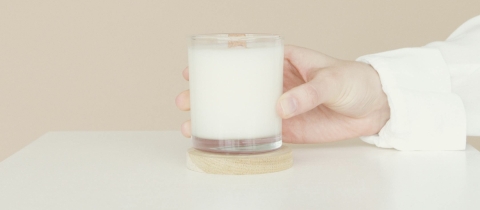As consumers we like choices. Therefore, it comes as no surprise that companies provide us with a variety of different milks to choose from. We have the option to purchase whole milk, 2% milk, 1% milk, skim milk as well as organic versions of these. All milk sold undergoes pasteurization, homogenization and fortification with calcium and vitaminD.
Thanks to Louis Pasteur, pasteurization ensures that the harmful microorganisms in the milk are destroyed by heat. Homogenization prevents the fat in milk from rising to the top by breaking fat particles down into tiny droplets that remain suspended in water which makes up the bulk of milk.
The last step is the addition of vitamin D and calcium. But there is an exception. Calcium is not added to skim milk. That seems to be a curiosity, but there is a reasonable explanation.
In milk, calcium is found in the watery portion. In full fat, 2% and 1% milk some of the volume is taken up by fat, meaning there is less water, and therefore less calcium. Appropriate amounts of calcium are added so that each version has the same calcium content. Since skim milk has no fat, it contains more water and therefore more calcium. It does not need to be fortified.







